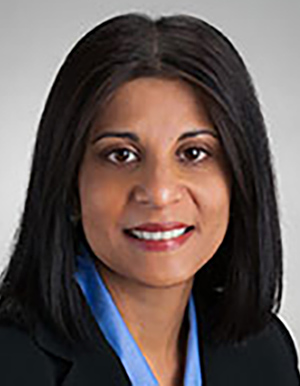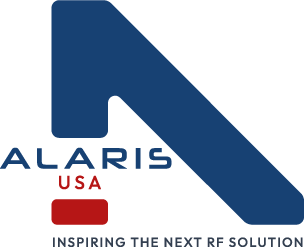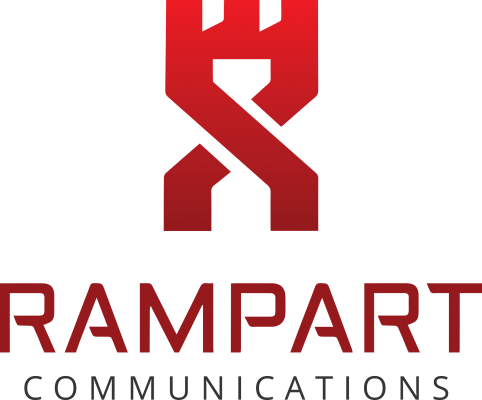Tuesday, October 31
AM Panel 1: 5G For Defense
PM Panel 2: Emerged Tech - AI for Military Comms
PM Panel 3: Beyond Fixed Spectrum Allocations - Technology to Enable increased flexibility in Commercial and DoD Spectrum Sharing
Wednesday, November 1
AM Panel 4: Operational Learnings from DoD's First 5G O-RAN Wireless Network Deployments
PM Panel 5: Advancing Transmission Security (TRANSEC) for Secure Military Operations
PM Panel 6: Realization of FutureG and 5G through close collaboration between DoD, Industry and Academia
Thursday, November 2
PANEL 1: 5G FOR DEFENSE
Date: Tuesday, October 31
Time: 11:15 - 12:35
Room: Provincetown, 4th Floor
Description: This panel will tap into a wide range of experiences using 5G in Defense settings. Using commercial 5G cellular capabilities, NATO, EU, and US DoD test beds are experiencing promising results in unifying communications –including a wider array of devices and infrastructure, interoperability of components, compatibility of various partner systems, ability to add applications and capabilities on top of and into the network, and improved coverage with 5G and NTN.
Panel Organizer:
 Sheryl Genco
Sheryl Genco
VP Advanced Technolgy Group, Ericsson
View Biography
Sheryl Genco is Vice President of Advanced Technology Group, a Senior Advisor to DARPA and serves on the Executive Committee of the National Spectrum Consortium. Dr. Genco was also a member of the Senior Executive Service for the Department of Commerce where she was the laboratory director for NTIA. At Honeywell, Dr. Genco was the Senior Engineering Director for Quantum Solutions. Her contributions have been at the forefront of critical technology areas impacting federal and commercial programs including quantum systems, emerging technology, spectrum efficiency, 5G and broadband, satellite communications, unmanned aviation systems, and radio sciences. Dr. Genco is an IEEE Senior Member and received Ph.D., M.S., and B.S. degrees in electrical engineering.
Panelists:
Lieutenant Colonel Benjamin Pimentel
DoD
View Biography
Lieutenant Colonel Benjamin Pimentel is a Marine Corps Communications Officer and Electronics Engineer. He holds a B.S. from the U.S. Naval Academy, an M.S. in Electrical Engineering, an academic certificate in Cyber Warfare, and a Ph.D. in Information Sciences, all from the Naval Postgraduate School. His military education includes non-resident Expeditionary Warfare School, the College of Naval Command Staff, and the Joint Cyberspace Operational Planners Course. His operational assignments include S-6 Platoon Commander, Headquarters Co, 7th Marines from 2008-2011 (OEF 2009-2010), Network Operations Officer and Deputy G-6, Marine Wing Headquarters Squadron 1 from 2016-2018, and Aide-de-Camp to the Commanding General, III Marine Expeditionary Force from 2018-2019. His graduate education utilization assignments include Deputy Program Manager and Program Manager (acting) for Expeditionary C4/Cyber at the Office of Naval Research from 2013-2016. In 2022, he reported to the Deputy Commandant for Combat Development and Integration in Quantico, Virginia where he joined the Force Design Research Group. He is currently on a temporary assignment to the FutureG Office in the Office of the Under Secretary of Defense for Research and Engineering where he serves as the Marine Corps Lead for Warfighter Engagement and leads the Camp Pendleton 5G experiment for Expeditionary Advanced Base Operations.
Michael Miller
Division Director - VT- ARC
View Biography
Michael Miller is the Director of the Engineering, Test & Evaluation Division at Virginia Tech Applied Research Corporation (VT-ARC). He is responsible for leading all division operations, to include developing and executing the corporation’s strategy to advanced wireless communications and sensing systems. Michael is an experienced business and technology leader in the defense and space sector; providing strategic leadership to advance innovation in 5G/6G wireless technologies, spectrum policy, cybersecurity and airborne/space-based platforms/sensors, through applied research, prototype development and collaboration with academia, industry and government. In addition to his time at VT-ARC, Michael served as the Director of Operations for a defense contracting company, was a senior advisor for the Secretary of Defense’s ISR Task Force, advised U.S. Strategic Command (STRATCOM) on ISR operations, led test and evaluation at Joint Forces Command and served in the U.S. Air Force as an aviator on C2/ISR airborne platforms.
David Mueller
Spectrum Solutions Architect, AT&T Defense and National Security
View Biography
David Mueller is currently the Spectrum Solutions Architect on AT&T’s Defense and National Security Team. In this role, he helps plan long term direction for AT&T’s use of spectrum. He is currently the industry Co-Chair of the classified forum of the Partnering to Advance Trusted and Holistic Spectrum Solutions (PATHSS-C) Task Group which is focused on spectrum sharing solutions between industry and the Department of Defense. He came to AT&T in October of 2021 after a 25-year career as an officer and EA-6B Prowler pilot in the U.S. Marine Corps. His career includes seven combat deployments, squadron command, and several strategic level positions. His final active duty job was as Strategy Lead and Marine Corps representative to the Office of the Secretary of Defense, Electromagnetic Spectrum Operations Cross Functional Team (EMSO CFT) where he was a primary author of the 2020 DoD EMS Superiority Strategy and led the effort that developed the implementation plan for that strategy. David has degrees from the U.S. Naval Academy, Australian Command and Staff College, The University of New South Wales (Australia), and Air War College.

Lizy Paul
Director 5G mil
View Biography
Lizy Paul is the Director for 5G.MIL® Programs, Lockheed Martin. In this position Lizy leads the strategy and execution of 5G.MIL and advanced communications programs for corporate. She is also responsible for the development and management of strategic industry relationships.
Prior to joining Lockheed Martin, Lizy was the Director of Technical Strategy for Defense Communications, Datalinks and Networking Solutions for Collins Aerospace, an RTX company. Lizy has also held engineering leadership positions at Motorola, Ericsson, and Hughes Network Systems.
Lizy currently serves as the appointed co-chair for the Council on Competitiveness, Alliance for Transformational Computing (ATC) leading the advocacy to maintain U.S. leadership in transformational computing and its applications and is the appointed General Chair of IEEE Military Communications (MILCOM) for 2024. She has also served as the elected chair of the U.S. National Spectrum Consortium (NSC). Lizy was honored with the career achievement award by the Society of Asian Scientists and Engineers (SASE) in 2023.
Lizy has a Master of Science degree in Electrical Engineering from Johns Hopkins University and an Executive MBA from the University of Iowa. She holds 18 United States patents in RF Communications and Networking technologies.
Armands Mierans
Innovation Lead, LMT-Latvia
View Biography
Armands Meirāns is the LMT Innovation Lead for public safety and defence projects with a background of over 15 years in the telecommunications industry. With an MBA and master’s degree in telecommunications engineering, Armands has been involved in wide range of international (NATO, EU) projects related to the study of 5G's potential to benefit first responders and defence use cases. He works closely with stakeholders and clients by applying state of the art communications technologies for practical use.
Chris Yaw
VP End to End Solutions, Ericsson
View Biography
Christopher Yaw is Ericsson’s Chief Solution Architect for its Mission Critical Systems practice in North America with over 30 years of experience in the technical computing and wireless space. He has championed adoption of internet services over hybrid fiber/coax networks, deployed 3G/4G/5G broadband cellular networks globally and performed in lead technical and managerial positions for DoD, federal, state, and local programs. Mr. Yaw is currently responsible for mission critical network solutions across Ericsson’s carrier and government customers.
Panel Moderator:
 Sheryl Genco
Sheryl Genco
VP Advanced Technolgy Group, Ericsson
View Biography
Sheryl Genco is Vice President of Advanced Technology Group, a Senior Advisor to DARPA and serves on the Executive Committee of the National Spectrum Consortium. Dr. Genco was also a member of the Senior Executive Service for the Department of Commerce where she was the laboratory director for NTIA. At Honeywell, Dr. Genco was the Senior Engineering Director for Quantum Solutions. Her contributions have been at the forefront of critical technology areas impacting federal and commercial programs including quantum systems, emerging technology, spectrum efficiency, 5G and broadband, satellite communications, unmanned aviation systems, and radio sciences. Dr. Genco is an IEEE Senior Member and received Ph.D., M.S., and B.S. degrees in electrical engineering.
PANEL 2: EMERGED TECH - AI FOR MILITARY COMMS
Date: Tuesday, October 31
Time: 14:10 - 15:30
Room: Provincetown, 4th Floor
Description: The emergence of artificial intelligence (AI) has the potential of ushering in groundbreaking capabilities that could revolution military communications and cybersecurity, fundamentally altering how armed forces conduct operations and collaborate during missions. With access to vast data resources and advanced computing capabilities, the US military can harness AI as a powerful "second brain," enabling swift and precise threat detection, intelligent crisis management, and proactive prevention of potential disruptions. AI's autonomous decision-making and generative capabilities fortify cybersecurity defenses, safeguard critical assets, and elevate situational awareness to unprecedented levels; empowering the military with unmatched agility and resilience in the face of modern challenges. However, the US DoD is faced with a dichotomy where safeguards must be taken to ethically leverage these capabilities knowing fair well that the US DoD’s near peer advisories may not follow suit.
This panel will foster discussions on the latest advancements and opportunities of discriminative and generative AI in the military and cybersecurity domains. It will shed light on the proper mechanisms required to design and optimize future AI models for military applications, ensuring robust safeguarding mechanisms. The panel will delve into the collaborative efforts between industry, academia, and the government to develop cutting-edge AI technologies that meet the rigorous demands of the military’s mission focused operations.
Panel Organizer:
 Sheryl Genco
Sheryl Genco
VP Advanced Technolgy Group, Ericsson
View Biography
Sheryl Genco is Vice President of Advanced Technology Group, a Senior Advisor to DARPA and serves on the Executive Committee of the National Spectrum Consortium. Dr. Genco was also a member of the Senior Executive Service for the Department of Commerce where she was the laboratory director for NTIA. At Honeywell, Dr. Genco was the Senior Engineering Director for Quantum Solutions. Her contributions have been at the forefront of critical technology areas impacting federal and commercial programs including quantum systems, emerging technology, spectrum efficiency, 5G and broadband, satellite communications, unmanned aviation systems, and radio sciences. Dr. Genco is an IEEE Senior Member and received Ph.D., M.S., and B.S. degrees in electrical engineering.
Panelists:
Armands Meirāns
Lockheed Martin
View Biography
Armands Meirāns is the LMT Innovation Lead for public safety and defence projects with a background of over 15 years in the telecommunications industry. With an MBA and master’s degree in telecommunications engineering, Armands has been involved in wide range of international (NATO, EU) projects related to the study of 5G's potential to benefit first responders and defence use cases. He works closely with stakeholders and clients by applying state of the art communications technologies for practical use.
 Tim O'Shea
Tim O'Shea
Chief Technology Officer, DeepSig
View Biography
Tim O'Shea is the CTO at DeepSig Inc., where he is focused on building a machine learning driven new generation of radio communications and sensing systems which adapt to exploit to the high degrees of freedom present in modern RF environments and transceiver systems. He is also a Research Scientist at Virginia Tech, where he also completed his PhD in 2017, studying new applications of machine learning to RF systems. He has helped launch several RF-centric start-ups including Hawkeye 360 and Federated Wireless, and previously held an engineering R&D position within the US DOD.
 Paul Tilghman
Paul Tilghman
Senior director - Azure Spectrum Technologies, Microsoft
View Biography
Paul Tilghman is the Senior Director of Spectrum Technologies in Microsoft’s Strategic Mission Technologies organization, where he focuses on the intersection of wireless communications, software radio, and virtualization technology with the cloud. The team is responsible for cloud-borne software radio, and access to Azure anywhere on the planet, at any security level through terrestrial (5G) and space-based (SATCOM) wireless communications. Prior to joining Microsoft in 2019, Paul was a Program Manager at the Defense Advanced Research Projects Agency (DARPA) where he defined and led cornerstone programs of the nation’s wireless & AI research portfolio. While at DARPA Paul fielded the first Electronic Warfare systems to employ AI, created a program to build next-generation waferscale super computers for wireless emulation, launched the RF Machine Learning Systems program which created the world’s first neural networks designed for RF signal processing, and created the Spectrum Collaboration Challenge in which winning teams created collaborative AI systems to dynamically manage shared spectrum. Prior to joining DARPA, Mr. Tilghman was a senior research engineer at Lockheed Martin’s Advanced Technology Laboratories where he led programs in adaptive electronic warfare, signals intelligence and non-cooperative geolocation.
 Alex Neefus
Alex Neefus
VP Systems Archecture, Nvidia
View Biography
Alex Neefus is the VP of Public Sector Solution Architecture at Nvidia. Alex leads the solution architecture teams that covers DOD, System Integrators, embedded processing, High Performance Computing, Civilian and Intelligence agencies for NVIDIA. He and his team are responsible for applying NVIDIA technology, to accelerate customer mission objectives. He and his team work closely with NVIDIA’s GPU, CPU and networking hardware teams, as well as the software SDK development teams in NVIDIA engineering, to bring the requirements of industry back to engineering and shape the next generation of products. Alex came to Nvidia in 2021 through the acquisition of Mellanox Technologies where we worked the 11 years prior. Alex’s background includes design validation, software development for communication and streaming middleware products. His personal technical focus has been on interconnect and high-performance networking designs. Alex was a contributor to the development of the Infiniband™ standard. He has been the lead network architect on dozens of the world’s most powerful supercomputers. His most recent professional interest is bringing High Performance Computing (HPC) designs to the Embedded System ecosystem, to enable the next generation of edge sensor processing. Alex holds a B.S. in Computer Science from the University of New Hampshire.
Andy Young
Datalytica
View Biography
Andrew F. Young – Datalytica, DARPA
With almost three decades of service in the United States Navy and the Marine Corps, Commander (ret) Andrew F. Young has been at the forefront of advancing military communications, cyber warfare, and information systems. Beginning as an Enlisted Field Radio Operator in the Marine Corps, he ascended through the ranks as a Navy Cryptologic Warfare Officer, gaining expertise in a variety of roles that required a deep understanding of secure and resilient communications. His tenure at U.S. Fleet Cyber Command/U.S. 10th Fleet involved in-depth analysis and evaluation of long-term plans for current fleet usage, optimizing intelligence capabilities through the integration of next-gen technologies.
Panel Moderator:
 Sheryl Genco
Sheryl Genco
VP Advanced Technolgy Group, Ericsson
View Biography
Sheryl Genco is Vice President of Advanced Technology Group, a Senior Advisor to DARPA and serves on the Executive Committee of the National Spectrum Consortium. Dr. Genco was also a member of the Senior Executive Service for the Department of Commerce where she was the laboratory director for NTIA. At Honeywell, Dr. Genco was the Senior Engineering Director for Quantum Solutions. Her contributions have been at the forefront of critical technology areas impacting federal and commercial programs including quantum systems, emerging technology, spectrum efficiency, 5G and broadband, satellite communications, unmanned aviation systems, and radio sciences. Dr. Genco is an IEEE Senior Member and received Ph.D., M.S., and B.S. degrees in electrical engineering.
PANEL 3: BEYOND FIXED SPECTRUM ALLOCATIONS - TECHNOLOGY TO ENABLE INCREASED FLEXIBILITY IN COMMERCIAL AND DOD SPECTRUM SHARING
Date: Tuesday, October 31
Time: 14:10 - 15:30
Room: Simmons, 3rd Floor
Description: The panel will focus on existing methods of Spectrum sharing that have been used and the success they have had, the methods of sharing that are in development, and future ideas for how to more efficiently share the spectrum. With that the concerns of interference also emerge and the Group will discuss mitigations that could be employed.
Panel Organizer:
Joseph Molnar
Naval Research Laboratory
View Biography
Coming soon.
Panelists:
Eric Makara
Naval Research Laboratory
View Biography
Eric Makara is an electronics engineer and the Section Head of the Systems Integration and Instrumentation Section (Code 5524), in the Networks and Communication Systems Branch, Information Technology Division. In his position, Mr. Makara supervises a team of researchers and engineers spanning domains of electrical/electronic engineering, computer engineering, and computer science. Mr. Makara has contributed and led projects in advanced wireless communications technologies benefiting the Navy, Marine Corps, and joint services. Mr. Makara is a technical subject matter expert in wireless communications systems, radio frequency (RF) spectrum dependent systems, wireless network protocols, communications systems integration, laboratory and field experimentation, wireless network modeling and emulation, and electronic test equipment. He is a recipient of the Jerome and Isabella Karle Distinguished Scholar Fellowship (2018) during which he led a research effort in spectrum-agile wireless radio networks focused on novel protocol enhancements for improved performance in congested and contested environments. In 2021, he received an “On the Spot” award for meritorious performance as a Team Leader in the Fifth Generation Advanced Training Waveform (5G-ATW) S&T research effort in support of the NAVAIR training community. Recently, he was the lead author of the "Spectrum Risk Assessment for Air Combat Training Systems in the Advanced Wireless Services (AWS-3)" band report. These contributions supported the Under Secretary of Defense for Personnel and Readiness (USD P&R) in developing networked communications to train pilots operating fifth generation fighter aircraft.
Joseph Weaver
Director, Spectrum Initiatives & Analysis OUSD(Research & Engineering) DCTO(Critical Technologies)/Applied Tech/Integrated Sensing & Cyber
View Biography
Joshua Weaver, leading R&D efforts in all things spectrum -- sensing, communicating, & sharing. Collaborating with industry and academia by prototyping through consortium-OTA. Inventing the future with novel contracting, strategic partnerships, and fielding proven technologies.
Jonathan Ashdown
Air Force Research Laboratory
View Biography
Jonathan Ashdown was born in Niskayuna, NY, USA. He received the B.S., M.S., and Ph.D. degrees from Rensselaer Polytechnic Institute, Troy, NY, USA, in 2006, 2008, and 2012, respectively, all in electrical engineering. His Ph.D. dissertation was on a high-rate ultrasonic through-wall communication system using MIMO-OFDM in conjunction with interference mitigation techniques. In 2012, he was a recipient of the Best Unclassified Paper Award at the IEEE Military Communications Conference. From 2012 to 2015, he worked as an electronics engineer with the Department of Defense (DoD), Naval Information Warfare Center (NIWC) Atlantic, Charleston, SC, USA where he was involved in several basic and applied research projects for the U.S. Navy, mainly in the area of software defined radio. In 2015, he transferred within DoD. He is currently a senior electronics engineer within the Information Directorate of the Air Force Research Laboratory (AFRL), Rome, NY, USA, where he is involved in the research and development of advanced emerging communications and networking technologies for the U.S. Air Force including those enabling Dynamic Spectrum Management and Access. He currently serves as the Principal Investigator for the AFRL-led 5G Dynamic Spectrum Sharing (DSS) Program under OUSD(R&E)s 5G-to-Next G Initiative.
Sastry Kompella
NEXCEPTA/ Chief Scientist
View Biography
Sastry Kompella (S’04–M’06–SM’12) received the Ph.D. degree in electrical and computer engineering from the Virginia Polytechnic Institute and State University, Blacksburg, VA, USA, in 2006. Currently, he is the Chief Scientist at Nexcepta Inc., where he leads a group of researchers working on various aspects of wireless networks, including cognitive radio, Spectrum Sharing and Dynamic Spectrum Access, Age of Information and AI/ML for RF and big data. Before this, he was the Section Head for the Wireless Network Research Section under the Information Technology Division, U.S. Naval Research Laboratory, Washington, DC, USA.
Panel Moderator:
Eric Makara
Naval Research Laboratory
View Biography
Eric Makara is an electronics engineer and the Section Head of the Systems Integration and Instrumentation Section (Code 5524), in the Networks and Communication Systems Branch, Information Technology Division. In his position, Mr. Makara supervises a team of researchers and engineers spanning domains of electrical/electronic engineering, computer engineering, and computer science. Mr. Makara has contributed and led projects in advanced wireless communications technologies benefiting the Navy, Marine Corps, and joint services. Mr. Makara is a technical subject matter expert in wireless communications systems, radio frequency (RF) spectrum dependent systems, wireless network protocols, communications systems integration, laboratory and field experimentation, wireless network modeling and emulation, and electronic test equipment. He is a recipient of the Jerome and Isabella Karle Distinguished Scholar Fellowship (2018) during which he led a research effort in spectrum-agile wireless radio networks focused on novel protocol enhancements for improved performance in congested and contested environments. In 2021, he received an “On the Spot” award for meritorious performance as a Team Leader in the Fifth Generation Advanced Training Waveform (5G-ATW) S&T research effort in support of the NAVAIR training community. Recently, he was the lead author of the "Spectrum Risk Assessment for Air Combat Training Systems in the Advanced Wireless Services (AWS-3)" band report. These contributions supported the Under Secretary of Defense for Personnel and Readiness (USD P&R) in developing networked communications to train pilots operating fifth generation fighter aircraft.
PANEL 4: OPERATIONAL LEARNINGS FROM DOD'S FIRST 5G O-RAN WIRELESS NETWORK DEPLOYMENTS
Date: Wednesday, November 1
Time: 11:15 - 12:35
Room: Simmons, 3rd Floor
Description: Both 5G and O-RAN (Open Radio Access Network, RAN, with open interfaces) are emerging mobile communication technologies for the United States to regain global competitiveness in the telecommunications industry while also enabling military communications infrastructure to modernize. The US Department of Defense (DoD) has invested heavily since 2020 to accelerate the implementation, foster innovation, and learn how to best operate these technologies in dual use operational environments. During this time it has been hotly debated within both the telecommunications industry and military if 5G and O-RAN are living up to expectations. Are their respective levels of maturity ready to replace closed proprietary wireless communications systems as a viable alternative and open approach to deterministic connectivity infrastructure.
In the Spring of 2023 the first at scale end-to-end 5G standalone (5G RAN and 5G core) wireless system based on industry standard O-RAN interfaces became operational as part of the US DoD Research and Engineering (R&E) 5G program. The system was designed, built and operationalized using an ecosystem of US technology companies on commercial off the shelf (COTS) IP network as the hardware infrastructure. The 5G virtual RAN and core network functions (VNFs) are entirely in software allowing for modularity and deployment flexibility. Multiple vendor Radio Units (RUs) using both commercial and shared spectrum in low/mid bands using O-RAN 7.2x open interfaces. Coverage, connectivity and capacity is for both indoor and outdoor areas on a two mile wide operational airfield to include the flight line and three sizable hangars at Naval Air Station Whidbey Island (NASWI).
This panel will discuss the architectural and design considerations utilized and developed to deploy this leading-edge communication network. Now that the system is operational, specific performance characteristics are available for comparison to traditional and legacy systems, theoretical versus actual results, progress towards the objectives and promise of 5G, and the maturity of O-RAN as a viable open system approach for military communication requirements and infrastructure. The virtualization of the mobile wireless infrastructure on a COTS IP network also provides a unique opportunity to extend existing security methods and best practices for this emerging capability. Additionally, the data and metrics captured with this at scale deployment provides relevant input to current and planned applications that can take advantage of open systems to accelerate digital modernization processes and workforce usability.
Panel Organizer:
Kurt Jacobs
Mobile connectivity leader, JMA Wireless
View Biography
Kurt Jacobs has over 25 years of emerging communication technology development and network deployment experience. For JMA he currently leads solution architecture, ecosystem development and network deployment activities for mobile connectivity with a focus on the government and defense markets. In conjunction with the rapid evolution of private networks for enterprise, industrial, large venue and mobile network operators, his team and fellow OnGo partner companies are deploying some of the largest scale 5G and Open RAN public-private networks in the US. Kurt’s previous companies include NEC and technology startups on the forefront in the enterprise unified communications market as they transitioned from closed proprietary systems to open IP based networks. He is retired from a 30 year active and reserve duty career as a US Navy officer having served in numerous global assignments at sea and ashore. Kurt holds both Engineering and Business degrees from the University of Wisconsin-Madison, a National Security graduate from the US Naval War College, and former Assistant Professor for Math and Economics at the US Naval Academy.
Panelists:
Rajeev Gopal
Hughes Network System
View Biography
Rajeev Gopal is responsible for advanced space and software systems including architecture development, technical management and business development roles. Led multiple successful programs including proposal development, technical execution, and P&L in advanced communications, satellite systems, AI, machine learning, resource management, and LEO-satellite based sensing.
Developed an end-to-end information architecture for LEO satellite-based sensor data collection, distribution, processing, and dissemination and network/resource management capability using cloud, Service Oriented Architecture (SOA) and rule-based engine for automated resource allocation with prioritization.
Architected and led the development of SOA-based system for resource planning using automated rule-based (Java/DROOLS) decision making. Pioneered the use of small satellites and hosted payloads for resilient communications and designed an end-to-end architecture for aggregated ground system.
Architected a 4G/LTE system for first responders with universal coverage using satellite-based backhauls under unified management for a multi-company consortium. Served as an architect for an advanced LEO satellite system using 4G/LTE IP convergent technologies, inter-satellite links, onboard packet processing and Software Defined Networking (SDN) primitives. Currently working on OneWeb LEO SATCOM design and ground implementation.
Kevin McFadden
Cisco Systems
View Biography
Kevin McFadden is a vertical solutions architect focused on public sector engagements supporting Cisco’s Chief of Technology Office. Since he joined Cisco in 1999, he has performed strategic and visionary roles in key programs conducted by the U.S. Departments of Justice, Homeland Security, Treasury, and other federal, state, and local public sector agencies. A veteran of the communications field, he has more than twenty years of real-world experience that enables him to act as trusted adviser to many of Cisco’s customers and industry partners.
McFadden has focused his skills in emergency preparedness, response, and recovery capabilities. In this endeavor, McFadden meets regularly with federal, state, and local government representatives to understand their challenges and apply solutions to address their mission-critical needs. He has held lead roles in exercises such as NSSE Integration at the 2008 and 2012 Super Bowls, the 2012 Republican National Convention, Strong Angel, Collation Warrior Interoperability Demonstration, and various state and local events in Florida, Michigan, Indiana, and California. He also was a first-in responder during the 2005 Hurricane Katrina and 2010 Haiti Earthquake relief efforts. During these activities, McFadden demonstrated innovative solutions for humanitarian aid, infrastructure reconstitution, and pandemic/disaster response.
McFadden is an active member of Cisco’s Disaster Incident Response Team, FCC licensed amateur radio operator, and holds certifications for Incident Command Systems through FEMA’s National Incident Management System (NIMS).
Monty Groff
Director of Engineering, Private Network Solutions, Dish Network
View Biography
Monty Groff is 30+ year veteran of EchoStar evolving to Dish Networks in various engineering roles in the satellite, mobile wireless, O-RAN and now private wireless networking. As Director of Engineering he is responsible for leading new technology and business development in collaboration with cross-functional teams within the DISH Wireless organization. Focused on Private 5G Networks for Enterprise and Government organizations, he orchestrates end-to-end systems integration, R&D and validation within Dish and with leading technology partners for innovative 5G and O-RAN solutions
Kurt Jacobs
JMA Wireless
View Biography
Kurt Jacobs has over 25 years of emerging communication technology development and network deployment experience. For JMA he currently leads solution architecture, ecosystem development and network deployment activities for mobile connectivity with a focus on the government and defense markets. In conjunction with the rapid evolution of private networks for enterprise, industrial, large venue and mobile network operators, his team and fellow OnGo partner companies are deploying some of the largest scale 5G and Open RAN public-private networks in the US. Kurt’s previous companies include NEC and technology startups on the forefront in the enterprise unified communications market as they transitioned from closed proprietary systems to open IP based networks. He is retired from a 30 year active and reserve duty career as a US Navy officer having served in numerous global assignments at sea and ashore. Kurt holds both Engineering and Business degrees from the University of Wisconsin-Madison, a National Security graduate from the US Naval War College, and former Assistant Professor for Math and Economics at the US Naval Academy.
Panel Moderator:
Kevin McFadden
Cisco Systems
View Biography
PANEL 5: ADVANCING TRANSMISSION SECURITY (TRANSEC) FOR SECURE MILITARY OPERATIONS
Date: Wednesday, November 1
Time: 14:10 - 15:30
Room: Regis, 3rd Floor
Description: Secure transmission of sensitive and classified information is crucial in modern military operations. This panel brings together military, defense industry, and academia experts to explore the multifaceted aspects of TRANSEC. The panelists will address evolving threats to communication networks, including cyberattacks, data breaches, interception, and unauthorized access. They will identify critical areas for strengthening TRANSEC measures. The need for common TRANSEC nomenclature and definitions will be also addressed.
The panel session will focus on emerging technologies that enhance TRANSEC, such as encryption algorithms, secure protocols, authentication mechanisms, intrusion detection systems, etc. The panelists will explore their potential applications and discuss strategies for overcoming implementation challenges.
Collaboration and information sharing among stakeholders will also be emphasized. Partnerships between military, defense industry leaders, policymakers, researchers, and cybersecurity professionals will enable the development of comprehensive TRANSEC strategies encompassing prevention, detection, response, and recovery. Attendees will gain practical knowledge and innovative ideas to address TRANSEC concerns amid rapid technological advancements and an evolving threat landscape.
Panel Organizer:
Julia Andrusenko
Senior RF communications Engineer, Rampart Communications, Inc.
View Biography
Julia Andrusenko received her bachelor's and master's degrees in electrical engineering from Drexel University. She currently serves as a senior RF communications engineer at Rampart Communications. Previously, Julia was a Chief Engineer of the Mission Critical Communications group and a senior communications engineer at the Johns Hopkins University Applied Physics Laboratory (JHU/APL). Ms. Andrusenko has over 20 years of experience in communications theory, wireless networking, satellite communications, Radio Frequency (RF) propagation prediction, communications systems vulnerability, computer simulation of communications systems, evolutionary computation, genetic algorithms/programming, MIMO, and millimeter wave technologies. She also has substantial experience in developing electronic warfare methodologies for various advanced commercial communications systems and military data links.
Ms. Andrusenko is a published author of several technical papers and has co-authored two books: “Wireless Internetworking: Understanding Internetworking Challenges” through Wiley/IEEE Press and “Cognitive Electronic Warfare: An Artificial Intelligence Approach” through Artech House. Ms. Andrusenko is a senior member of IEEE, a member of the IEEE Communications Society, and a voting Member of the IEEE 1900.5 Working Group (WG) on Policy Language and Architectures for Managing Cognitive Radio for Dynamic Spectrum Access Applications.
Ms. Andrusenko has served as a session chair and organizer, technical reviewer, invited speaker, and panelist for various conferences. She also co-taught successful tutorials at previous MILCOM conferences on the topics of mmWave as well as intelligent algorithms and their applications to military communications and networking. Ms. Andrusenko has also served on the steering committee for the annual IEEE/APL 5G Technologies for First Responder and Tactical Networks Workshops.
Panelists:
Keith Palmisano
Technical Founder and Chief Technology Officer, Rampart Communications, Inc.
View Biography
As Rampart’s Technical Founder and Chief Technology Officer (CTO), Keith has 16 years of information security expertise in multiple U.S. executive branch agencies. In his current role, Keith is responsible for aligning Rampart's technology roadmap and product direction with the company's vision and goals. Keith's experiences during his earlier years in U.S. agencies gave him a real-world experience to ensure Rampart's products meet the needs of our Defense and Intelligence Communities.
Jeffrey Harris
Chair, Rochester Institute of Technology; Chair, Open Geospatial Consortium
View Biography
Jeff Harris is the former Director of the National Reconnaissance Office (NRO), former Assistant Secretary of the Air Force for Space, and former President of Lockheed Martin Missiles and Space Company. He currently serves as the Chairman of the Open Geospatial Consortium.
Jon Pelson
Chief Commercial Officer, Rampart Communications, Inc.
View Biography
Jon Pelson currently serves as Rampart’s Chief Commercial Officer (CCO). Jon spent 25 years as a wireless industry executive, including as Vice President of Lucent Technologies and Chief of Convergence Strategy for British Telecom. He is the author of "Wireless Wars, China's Dangerous Domination of 5G and How We're Fighting Back," a book that proposes innovative ways for free countries to regain the technology edge from China.
Dr. Ritu Chadha
Senior Researcher at Perspecta Labs
View Biography
Dr. Ritu Chadha is a senior research director at Peraton Labs, where she leads the machine learning and data analytics business unit. She is responsible for basic and applied research programs in the areas of machine learning and artificial intelligence, with applications in a variety of domains, including cyber security, wireless networking, network management, machine vision, text analytics, autonomy, and modeling and simulation.
During her tenure at Peraton Labs and its predecessor companies (Perspecta Labs, Bellcore, Telcordia, Applied Communication Sciences, Vencore Labs), Chadha has performed and managed research in areas at the intersection of cybersecurity, machine learning, network management, and wireless networking for customers including the Defense Advanced Research Projects Agency (DARPA), U.S. Army Research Laboratory, U.S. Army C5ISR Center, Air Force Research Laboratory, and other government as well as commercial customers.
Chadha is a pioneer in the area of policy-based network management and its application to wireless and mobile ad hoc networks. Chadha’s critical contribution was to leverage the latest advancements in these areas and use them to shape and guide the development of a new suite of successful products for IP network management.
Chadha received a Bachelor of Arts degree in mathematics from St. Stephen’s College, Delhi, India, a Master of Science degree in computer science from Virginia Tech and a doctorate in computer science from the University of North Carolina at Chapel Hill. She has authored more than 100 conference and journal papers, is a coinventor on multiple patents and has written a book on the application of policy-based network management to mobile ad hoc networks. Chadha was elected a Telcordia Fellow in 2008 in acknowledgment of the significance of her contributions to Telcordia’s business in producing both leading edge research and customer-focused results. She was awarded the IEEE MILCOM Lifetime Technical Achievement Award in 2021.
Colonel (Ret) Joe Pishock
Senior Director Business Development, OCEUS Networks
View Biography
COLONEL (R) Joe Pishock is the former Director of Networks and Services for US Special Operations Command. From Summer 2020 until his recent retirement in the Summer of 2023, he oversaw the daily operations of the 4th largest network in the Department of Defense. SOCOM’s enterprise distributes multiple classifications of voice, video, and data to fixed and mobile sites around the world. Constantly changing to meet the needs of the mission and adapt to the situation, SOCOM communication demands adaptability, flexibility, and risk management to a level unique within the Department of Defense.
COL Pishock previously commanded an Army Signal Brigade in Korea and was the CIO G6 for the Army’s 25th Infantry Division, extending networks across the Pacific area of operations. His various SOF assignments served 2 tours in the Army’s elite Ranger Regiment, commanded in the 112th Special Operations Signal Battalion and spent 4 years as the Operations Officer in the Joint Communications Unit.
Since August, Joe has been the Senior Director of Business Development for OCEUS Networks, a cutting-edge solutions company specializing in private 5G. He holds a Doctorate in Education from St. John’s University in New York City and was a Fellow in Residence at Columbia University. He also attended professional military schools with both the Air Force and the Marines.
Joe is married to Kristine - herself a former Army jumpmaster. They have 3 kids, 2 dogs, and live in the Tampa area.
Dr. Sam Farroha
Mission Leader at the Department of Defense
View Biography
Dr. Sam Farroha currently serves as a Mission leader at the Department of Defense overseeing the development and deployment of capabilities to serve the National Security. He also is on the faculty of the Johns Hopkins University teaching in the Information Systems Engineering and Cybersecurity areas. He has served in multiple capacities within the DoD including leading the development of Analytical systems, revolutionization of datalink capabilities, overseeing the Emerging Mobile and Wireless capabilities and Cybersecurity. He led the development of the first 5G testbed for the IC and collaborated with academia and industry to help strengthen the Cybersecurity capabilities of the next generation compute and communication systems while enhancing performance. His career extends over 30 years working for multiple commercial entities and research labs and has numerous publications. He holds a BS in Computer Engineering, MS and PhD in Electrical Engineering, an MBA and postgraduate in Systems Engineering. He has been an avid supporter of the IEEE, ACM and SPIE through volunteering and sponsoring multiple events. He also partners with multiple academic institutions to help in mentoring the next generations scientific leaders, advise MS and PhD students and guide research to serve humanity.
Dr. DJ Shyy
Principal 5G Technologist, MITRE
View Biography
Dr. Shyy is a Principal 5G Technologist within MITRE. He has significant experience in LTE, 5G, and 6G, including cellular system design and optimization; security threats / mitigations (authentication, encryption, integrity, zero trust, blockchain, anti-jamming, and LPx [D, I, G]); spectrum sharing; Gov 5G security strategy and framework; architecting 5G testbeds for 5G NSA and SA modes with NR gNB and carrier-grade soft core; and lab/ field performance testing. He is also a 5G technical advisor for Gov sponsors. He was the Principal Investigator for five MITRE Innovation Projects (LTE/LMR Convergence; 5G and Government Requirements; LTE Transmission Security; 5G Applied Research; 6G AI/ML Industry Assessment) with total R&D of more than 1 million dollars.
He is the technical lead for developing test plans and conducting interference assessments between 5G network and NOAA SATCOM terminals for 5G Band N79 as well as between 5G network and radar for 5G Band N77. He is the technical lead for the DoD 5G TRANSEC WG (https://sam.gov/opp/12d78c3be2af4a8994144b10f7ce5df5/view#general).
He researches 5G system threats and mitigations including over-the-air interface, UE, RAN (including O-RAN), core, MEC, and network slicing. He led the development of a 4G testbed with security enhancements. Conducted experimentations (including mutual trust with PKI, RAN slicing, IMSI obfuscation, and encryption of SIBs) for defeating attacks and threats (including IMSI catchers / rogue base stations from vendors as well as CNS and RF assessment teams) at a military exercise in 2018.
He was a significant contributor for 5G security threats analysis and mitigation tasking: “Investigating Security Evaluation Process for 5G Technologies” CISA, DHS S&T, DoD Introduce Results of an Assessment into the 5G Security Evaluation Process; 5G Security Evaluation Process Investigation: Version 1, May 2022.
He was the primary author of “5G Testbed Assessment” and “5G Framework to Conduct 5G Testing” (https://www.cio.gov/assets/files/Framework-to-Conduct-5G-Testing-508.pdf) guiding federal agencies in establishing test capabilities for assessment of 5G capabilities for mission enablement, 2020. He was the technical lead for performing multiple field testing of spectrum sharing between USMC MRC-142C and LTE systems for 1710 – 1755 MHz band with the participation of all 4G service providers.
He was a panelist for the 5G Sidelink Panel at the Workshop on ns-3 (WNS3), June 2023 (https://www.nsnam.org/research/wns3/wns3-2023/program/). He was the moderator for the 5G Blockchain Panel at the 2 nd Future Network Security: Challenges and Opportunities Workshop, March 2023 (https://futurenetworks.ieee.org/conferences/2nd-future- network-security-challenges-and-opportunities-workshop). He was the moderator for the 5G TRANSEC Tactics Panel in the IEEE MILCOM Conference, Dec 2022 (https://milcom2022.milcom.org/program/technical-panels#panel-9).
He presented “6G Security Threats and Research Challenges” at the NGA Roadmap Working Group, April 2022. He was the chair of WiMAX (2008 – 2012), LTE (2012 – 2016), and 5G (2016-2020) Secure Profile working groups (interacting with Gov and industry partners). He was a member of FCC CSRIC VII WG3 and submitted multiple technical contributions, 2020 – 2021.
He developed three 3GPP SA3 contributions addressing 5G security gaps, advocated across govt/industry for endorsement, and resulting in 3GPP acceptance in 2020. He represented DoD CIO in participating in the National Spectrum Consortium (NSC) Technical Concept Assessment Review by reviewing 34 technical concepts in 5G Security, 2019. He was a speaker for the Defense Science Board 5G Task Force 2018. He was the MITRE chair of 5G Project Team in ATARC 2019-2020. He was the co-chair of AFCEA LTE/LMR Convergence Workshop Nov. 2014. He was the co-chair of AFCEA Classified US Military Communications (CUMC) Conference Nov. 2013. He was an adjunct professor at Johns Hopkins and George Mason Universities. Dr. Shyy received his M.S. and Ph.D. degrees in electrical engineering from Georgia Institute of Technology, Atlanta, GA.
Panel Moderator:
Keith Palmisano
Technical Founder and Chief Technology Officer, Rampart Communications, Inc.
View Biography
As Rampart’s Technical Founder and Chief Technology Officer (CTO), Keith has 16 years of information security expertise in multiple U.S. executive branch agencies. In his current role, Keith is responsible for aligning Rampart's technology roadmap and product direction with the company's vision and goals. Keith's experiences during his earlier years in U.S. agencies gave him a real-world experience to ensure Rampart's products meet the needs of our Defense and Intelligence Communities.
PANEL 6: REALIZATION OF FUTUREG AND 5G THROUGH CLOSE COLLABORATION BETWEEN DOD, INDUSTRY AND ACADEMIA
Date: Wednesday, November 1
Time: 14:10 - 15:30
Room: Simmons, 3rd Floor
Description: Perspectives on how DoD, Industry and Academia can successfully operationalize FutureG and 5G capabilities for military and dual-use applications by closely collaborating through all the phases - standardization, research, development, and test.
Panel Organizer:

Lizy Paul
Director, Lockheed Martin
View Biography
Lizy Paul is the Director for 5G.MIL® Programs, Lockheed Martin. In this position Lizy leads the strategy and execution of 5G.MIL and advanced communications programs for corporate. She is also responsible for the development and management of strategic industry relationships.
Prior to joining Lockheed Martin, Lizy was the Director of Technical Strategy for Defense Communications, Datalinks and Networking Solutions for Collins Aerospace, an RTX company. Lizy has also held engineering leadership positions at Motorola, Ericsson, and Hughes Network Systems.
Lizy currently serves as the appointed co-chair for the Council on Competitiveness, Alliance for Transformational Computing (ATC) leading the advocacy to maintain U.S. leadership in transformational computing and its applications and is the appointed General Chair of IEEE Military Communications (MILCOM) for 2024. She has also served as the elected chair of the U.S. National Spectrum Consortium (NSC). Lizy was honored with the career achievement award by the Society of Asian Scientists and Engineers (SASE) in 2023.
Lizy has a Master of Science degree in Electrical Engineering from Johns Hopkins University and an Executive MBA from the University of Iowa. She holds 18 United States patents in RF Communications and Networking technologies.
Panelists:
Eric Burger
Research Director, Commonwealth Cyber Initative, Virigina Tech
View Biography
Bio forthcoming.
Tom Rondeau
Principal Director for FutureG & 5G, DoD OUSD (R&E)
View Biography
Bio forthcoming.
Bryan Lopez
Director, DON CIO Emerging Technologies
View Biography
Bio forthcoming.
Jeff Reed
Virgina Tech
View Biography
Bio forthcoming.
 Sheryl Genco
Sheryl Genco
VP Advanced Technolgy Group, Ericsson
View Biography
Sheryl Genco is Vice President of Advanced Technology Group, a Senior Advisor to DARPA and serves on the Executive Committee of the National Spectrum Consortium. Dr. Genco was also a member of the Senior Executive Service for the Department of Commerce where she was the laboratory director for NTIA. At Honeywell, Dr. Genco was the Senior Engineering Director for Quantum Solutions. Her contributions have been at the forefront of critical technology areas impacting federal and commercial programs including quantum systems, emerging technology, spectrum efficiency, 5G and broadband, satellite communications, unmanned aviation systems, and radio sciences. Dr. Genco is an IEEE Senior Member and received Ph.D., M.S., and B.S. degrees in electrical engineering.
Panel Moderator:
Eric Burger
Research Director, Commonwealth Cyber Initative, Virigina Tech
View Biography
Bio forthcoming.
PANEL 7: TACTICAL CLOUD SOLUTIONS AND MISSION PARTNER ENVIRONMENTS - USASOC'S MODULAR MISSION ENVIRONMENT
Date: Thursday, November 2
Time: 11:15 - 12:35
Room: Simmons, Third Floor
Description: The Modular Mission Environment (MME) is a cross classification cloud environment that (1) supports combined joint mission command and control, (2) enables secure bring-your-own-device (BYOD) mission partner communication and (3) permits data to flow from DoD sensors, partner databases, and open-source sites into centralized data lakes to enable AI/ML processing tools.
Key Capabilities and Attributes:
- Hardware and Transport Agnostic - This is a Bring-Your-Own Device ready environment.
- Zero Trust – Exquisite access and control to data and decision support tools.
- Global access to redundant geographic host locations – Enables forward posturing and rapid integration.
- Tailorable, scalable, and episodic – Push to provision capability that can be easily created and torn-down.
- Enables C2 for Targeting and Kinetic Operations - PLI, COT, Voice, and Message traffic ready.
The MME exists to enable information advantage and decision dominance, with emphasis on peer adversary competition, the DoD and ARSOF require an ecosystem to share data and enable advanced analytics and machine learning to operate to deliver insights unachievable by human analysts.
End State The Modular Mission Environment will provide a digital ecosystem for SOF, Conventional, Joint, and Partner Forces to enable analysis and automation of data obtained from the tactical edge, across echelons and classifications, in near real time.
Panel Organizer:
LTC Ryan Kenny
US Army
View Biography
LTC Kenny currently commands the 112th Signal Battalion (SO)(A). He earned his Bachelor of Arts degree from the University of Notre Dame; Master of Arts degree in National Security and Strategic Studies from the U.S. Naval War College; and Ph.D. from Carnegie Mellon University where his dissertation focused on artificial intelligence and human decision-making. LTC Kenny has served with the 82nd Airborne Division, Army Special Mission Community, and 516th Signal Brigade. He has three combat deployments to Afghanistan.
Panelists:
Joseph Feldmeth
Director, Field Tech Operations & Development at Net Vision Consultants (NVC)
View Biography
Bio forthcoming.
Bobby Kasrai
Principal Technical Specialist within the Data and Analytics vertical to the United States Special Operations Command for Microsoft
View Biography
Bio forthcoming.
Richard Franko
Strategic Account Director to the United States Special Operations Command for Microsoft
View Biography
Richard Franko currently serves as the Strategic Account Director to the United States Special Operations Command for Microsoft. He earned a B.S. in Civil Engineering from Rose-Hulman; Executive MBA from Denver University; and M.S. in IT Management from Denver University with a Capstone Thesis on Countering Chinese Intellectual Property Theft via Zero Trust Hyperscale Cloud. Richard was previously an Army Special Forces and Engineer Officer with five deployments in support of post 9/11 operations.
CW3 Jay Aleem
Cyberspace Defense Technician for 112th Signal Battalion (SO)(A)
View Biography
CW3 Jay Aleem serves as the Cyberspace Defense Technician for 112th Signal Battalion (SO)(A). He earned his Bachelor of Science degree in Computer Science from Wichita State University, and his Master of Science in Cyber Security and Information Assurance from Western Governors University. CW3 Aleem has served with 10th Mountain Division, 2nd Stryker Brigade Combat Team, and 21st Theater Sustainment Command. He has three combat deployments to Afghanistan
Panel Moderator:
LTC Ryan Kenny
US Army
View Biography
Bio forthcoming































